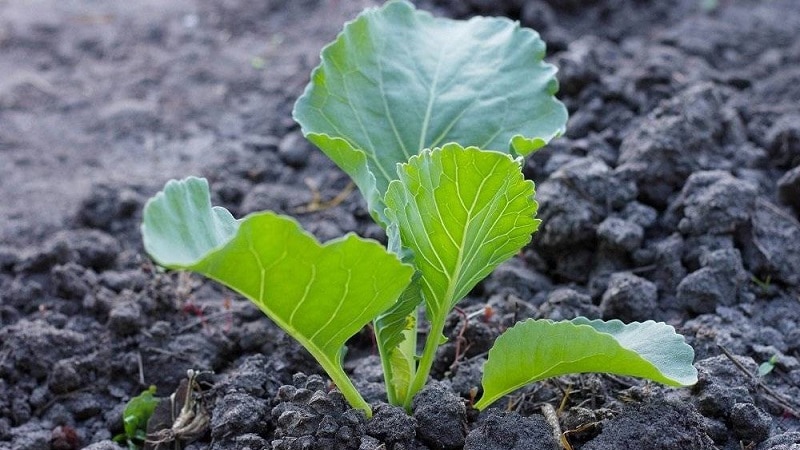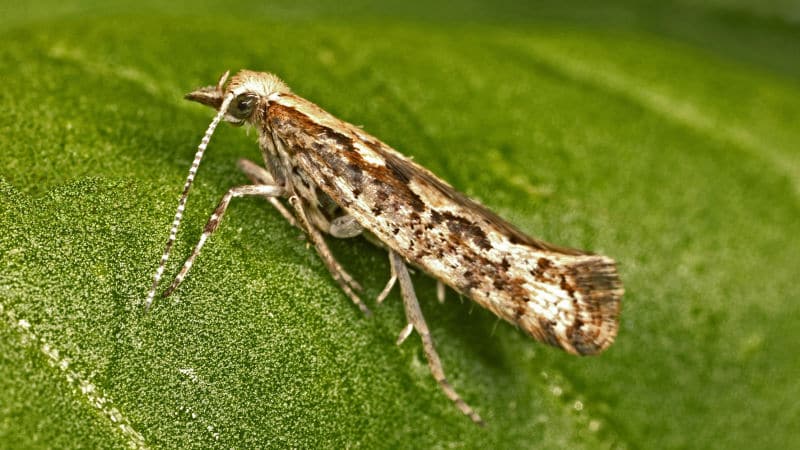High-yielding mid-season cabbage hybrid Cyclops f1
Cyclops F1 is a hybrid of white cabbage bred in Japan. It produces a rich harvest of tasty heads of cabbage that are suitable for fresh and processed consumption. Let's consider the main characteristics and features of the hybrid, tips for planting and growing.
Description of cabbage hybrid Cyclops F1
The hybrid is highly productive. However, it does not require special care. The heads of cabbage grow dense and powerful and are universal in use.

Origin and development
Cyclops was bred by Japanese breeders in the early 2000s. Scientists wanted to create a hybrid with dense heads of cabbage, high yield, good taste and resistance to different climatic zones.
The selection was carried out by the agricultural company SAKATA. The hybrid appeared in Russia in 2011, quickly gaining popularity among farmers and gardeners.
Chemical composition and beneficial properties
White cabbage contains a lot of fiber, which aids digestion. The vegetable increases the secretory activity of the stomach; cabbage phytoncides have antibacterial properties. The composition contains sulfur, manganese, potassium, vitamins B and C, K.
Features of application
Heads of cabbage are consumed fresh and used for preparing various dishes. Cyclops is one of the best hybrids for pickling. Thanks to the high content of vitamin C, the fermented product is of high quality.
Ripening period
Cyclops F1 is a mid-season hybrid. The full growing season is about 140 days.From the moment the seedlings are transplanted to a permanent place until full maturity, approximately 90 days pass.
Productivity
Productivity is high - 186–339 c/ha, depending on conditions. Cabbage showed a record result in the Ivanovo region - 749 c/ha.
Resistance to disease and cold
Cyclops is not susceptible to bacteriosis and fusarium wilt. In some cases, it is subject to black rot and clubroot.
The hybrid is a cold-resistant plant: it can tolerate short-term temperature drops down to -5°C, but does not respond well to sudden temperature changes.
Characteristics
The head is dense, compact and round, with good internal structure. On the cut it has a yellowish tint. The taste is excellent, very juicy. The average weight, according to the State Register of the Russian Federation, is from 1.2 to 1.9 kg, but farmers claim that they harvest vegetables weighing 2.5–5 kg.
The leaves are small, round, greenish-gray, slightly concave in shape, with a bubbly surface.
Suitable regions
Cyclops F1 is adapted for cultivation in various climatic zones, but is included in the State Register for the Central and North Caucasus regions.
Advantages and disadvantages of the Cyclop F1 hybrid
The main advantages of cabbage:
- Universal in use: delicate leaves allow cabbage to be consumed fresh and do not become loose after processing.
- Suitable for growing in open ground and greenhouses.
- Excellent taste of cabbage heads.
- Does not suffer from fusarium wilt and bacteriosis - serious diseases for this crop.
The main disadvantage is the requirement for lighting and soil.
Difference from other varieties and hybrids
The main difference is that this hybrid is suitable for both raw consumption and cooking.It is able to grow in many climatic zones.
Cabbage Cyclops: features of planting and growing
To obtain a rich harvest, it is important to follow the rules of agricultural technology.
Preparing for landing
Typically, Cyclops is grown in seedlings to reduce the harvest time. In some regions, when seeds are planted directly into open ground, the plants do not have time to ripen before the arrival of cold weather.
Seed preparation
Planting material purchased in specialized stores usually does not require additional preparation, as it is pre-treated. To improve germination, some gardeners carry out the following procedures:
- Immerse the seeds in warm water (approximately +40°C). The defective ones will pop up.
- Soak the planting material in a weak solution of potassium permanganate for disinfection, then rinse under running water.
- Before planting, soak in a growth stimulator to speed up germination.
Keep the seeds in the potassium permanganate solution for no more than 30 minutes.
Preparing seedlings
Seeds planted in a container with loose and fertile soil. To prepare the substrate, mix turf soil and humus in equal proportions.
Instructions for growing seedlings:
- Make grooves in the soil approximately 1 cm deep at a distance of 5 cm from each other.
- Place the seeds in these grooves at a distance of 3 cm, sprinkle with soil, and tamp down a little.
- Cover the container with glass or film and move it to a well-lit and warm place.
- When shoots appear after a few days, remove the film and move the container to a cooler room (with a temperature of up to +16°C). As the top layer of soil dries, water the sprouts.
- After a week, plant the plants in separate containers.
- A week before planting, begin to harden the seedlings: take them outside every day for 30–40 minutes and place them in partial shade.
Non-seedling planting
Before planting seeds, the soil on the site is cleared of weeds. All insects are destroyed with special preparations.
Seeds are disinfected in potassium permanganate. After the first shoots appear, the bed is thinned out, leaving only the strongest plants.
Soil requirements
It is desirable that the soil is fertile and loose, with neutral acidity. Such soil will provide the plants with nutrients and will allow water and air to pass well to the roots.
Groundwater located close to the surface of the earth leads to rotting of the root system. They must lie at a depth of at least 1 m.
Predecessors
It is advisable to plant cabbage after carrots, legumes and grains, garlic, onions, cucumbers and potatoes. Beets, radishes, tomatoes and radishes are considered bad predecessors.
Dates, scheme and rules of planting

The seedlings are transplanted into open ground in early May. The air temperature by this time should be at least +18°C.
Important! To make the transplant less painful for the seedlings, they stop watering them a week before the procedure.
The transplant is carried out in the evening or in cloudy weather:
- Make holes in the garden bed. Pour 1 liter of water into each and wait until the liquid is absorbed.
- Remove the plant from the container along with a lump of earth and place it in the hole.
- Sprinkle the roots with soil, compact them and water (0.5 liters per plant).
Planting density and depth
Leave 60 cm between rows of holes, and about 50 cm between plants. Seedlings are deepened so that the base bottom sheet was level with the soil surface.
Features of cultivation
In the first 4-5 days, the seedlings are shaded: direct sunlight at this time can harm young plants.
The Cyclops hybrid needs proper care to obtain a large harvest. In order for the seedlings to grow well, they are regularly watered, fertilized, and the quality of the soil is monitored.
Watering mode
Water the plants only with settled and warm water at a temperature of +20 to +25°C. In wet weather, cabbage is irrigated once a week, in dry weather - 2-3 times.
15 days before harvesting, watering is stopped to improve the keeping quality of the heads of cabbage during storage.
Loosening and hilling
Loosen the soil to a depth of 4 cm every time after rain and watering. Hilling is carried out once every 2-3 weeks. The height and diameter of the embankment is about 20 cm.
Top dressing
Fertilize cabbage 3 times:
- 2 weeks after transplantation - nitrogen;
- in mid-summer - nitrogen and phosphorus-potassium complexes;
- one month before harvest - phosphorus and potassium.
Saltpeter, humus and the preparations “Sudarushka”, “Agricola”, “Effekton” are suitable for feeding.
Measures to increase yield
To get a big harvest, it is important to water the plants correctly, taking into account weather conditions, follow fertilizer recommendations and monitor the condition of the topsoil.
Disease and pest control
Diseases and pests that threaten the Cyclops hybrid:
- Kila. This fungal disease usually affects young plants. Growths form on the roots, preventing the crop from absorbing moisture and nutrients from the ground. As a result, growth stops and the cabbage dies. It is important to immediately remove the diseased plant from the garden bed so that the disease does not spread, and sprinkle the soil with lime.
- Cruciferous flea beetles. Pests quickly spread throughout the garden bed as they easily jump from one plant to another. Adults feed on leaves, and larvae damage the root system of cabbage. To kill insects, use a mixture of manganese and colloidal salt in equal parts (4 g of the product is diluted in 10 liters of water). The resulting solution is sprayed on the plants every 10 days until the pests completely disappear. If the infestation is severe, insecticides are used.
- Beetles and butterflies (cabbage moth, bugs, aphids). Insects damage leaves and roots of plants. To get rid of pests, a mixture of tobacco dust and wood ash is sprinkled on cabbage leaves.

Difficulties in growing
The main problem is infection with clubroot. If urgent measures are not taken, the entire harvest will be ruined. Otherwise the hybrid is unpretentious.
Harvest and storage
Cabbage ripens by the end of August, when the heads of cabbage stop growing and become dense.
How and when to collect
Basic rules for collection and storage:
- Collect heads of cabbage in dry, cloudy weather;
- cut the cabbage with a sharp knife so that a stalk 2-3 cm long remains;
- Damaged copies should be used first.
Storage features and keeping quality of the Cyclop F1 hybrid
The cabbage is placed in the cellar, on wooden pallets, in 2-3 rows with the stalks facing up. The room must be between 0 and +2°C. It is desirable that the air humidity is at least 90%. If the conditions are met, vegetables can be stored for about 2 months.
Tips and reviews from experienced gardeners
Summer residents and gardeners who grew the Cyclops hybrid share their experience.
Tatyana Nikolaevna, Chelyabinsk: “Three years ago I bought the seeds of this hybrid. The cabbage grew good and tasty, there were no problems with it.The harvest is also stored well; we keep it in a cool cellar. We mainly use vegetables for pickling».
Victor Igorevich, Voronezh: “I usually plant cabbage for pickling. Previously, I only grew Moscow late. It is juicy and crispy, but was constantly attacked by pests. This time I decided to buy Cyclops F1 seeds. The hybrid grew without any problems, and the taste of the cabbage heads is not inferior to Moscow.”
Conclusion
Cyclops heads of cabbage have excellent taste and high commercial characteristics. The hybrid is suitable for growing in various regions. If you follow the watering and fertilizing regime, even a novice gardener can get a rich harvest of cabbage.